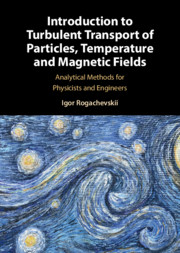Refine search
Actions for selected content:
5455 results in Thermal-fluids engineering
Acknowledgments
-
- Book:
- Energy Conversion Engineering
- Published online:
- 13 January 2022
- Print publication:
- 11 November 2021, pp xx-xx
-
- Chapter
- Export citation
8 - Combined, Oxy-Combustion, and Hybrid Cycles
-
- Book:
- Energy Conversion Engineering
- Published online:
- 13 January 2022
- Print publication:
- 11 November 2021, pp 423-483
-
- Chapter
- Export citation
Dedication
-
- Book:
- Energy Conversion Engineering
- Published online:
- 13 January 2022
- Print publication:
- 11 November 2021, pp v-vi
-
- Chapter
- Export citation
2 - Thermodynamics
-
- Book:
- Energy Conversion Engineering
- Published online:
- 13 January 2022
- Print publication:
- 11 November 2021, pp 34-121
-
- Chapter
- Export citation
7 - Fuel Cells at Finite Current
-
- Book:
- Energy Conversion Engineering
- Published online:
- 13 January 2022
- Print publication:
- 11 November 2021, pp 369-422
-
- Chapter
- Export citation
Index
-
- Book:
- Energy Conversion Engineering
- Published online:
- 13 January 2022
- Print publication:
- 11 November 2021, pp 806-816
-
- Chapter
- Export citation
11 - Low-to-Zero CO2 Cycles
-
- Book:
- Energy Conversion Engineering
- Published online:
- 13 January 2022
- Print publication:
- 11 November 2021, pp 608-658
-
- Chapter
- Export citation
Nomenclature
-
- Book:
- Energy Conversion Engineering
- Published online:
- 13 January 2022
- Print publication:
- 11 November 2021, pp xxi-xxiv
-
- Chapter
- Export citation
Preface
-
- Book:
- Energy Conversion Engineering
- Published online:
- 13 January 2022
- Print publication:
- 11 November 2021, pp xiii-xix
-
- Chapter
- Export citation

Dynamics of Multiphase Flows
-
- Published online:
- 10 September 2021
- Print publication:
- 17 June 2021

Introduction to Turbulent Transport of Particles, Temperature and Magnetic Fields
- Analytical Methods for Physicists and Engineers
-
- Published online:
- 10 September 2021
- Print publication:
- 05 August 2021
4 - Analysis Based on Budget Equations
-
- Book:
- Introduction to Turbulent Transport of Particles, Temperature and Magnetic Fields
- Published online:
- 10 September 2021
- Print publication:
- 05 August 2021, pp 155-176
-
- Chapter
- Export citation
Contents
-
- Book:
- Introduction to Turbulent Transport of Particles, Temperature and Magnetic Fields
- Published online:
- 10 September 2021
- Print publication:
- 05 August 2021, pp v-vi
-
- Chapter
- Export citation
Author Index
-
- Book:
- Introduction to Turbulent Transport of Particles, Temperature and Magnetic Fields
- Published online:
- 10 September 2021
- Print publication:
- 05 August 2021, pp 253-258
-
- Chapter
- Export citation
References
-
- Book:
- Introduction to Turbulent Transport of Particles, Temperature and Magnetic Fields
- Published online:
- 10 September 2021
- Print publication:
- 05 August 2021, pp 230-252
-
- Chapter
- Export citation
Subject Index
-
- Book:
- Introduction to Turbulent Transport of Particles, Temperature and Magnetic Fields
- Published online:
- 10 September 2021
- Print publication:
- 05 August 2021, pp 259-262
-
- Chapter
- Export citation
Frontmatter
-
- Book:
- Introduction to Turbulent Transport of Particles, Temperature and Magnetic Fields
- Published online:
- 10 September 2021
- Print publication:
- 05 August 2021, pp i-iv
-
- Chapter
- Export citation
2 - Particles and Gases in Density-Stratified Turbulence
-
- Book:
- Introduction to Turbulent Transport of Particles, Temperature and Magnetic Fields
- Published online:
- 10 September 2021
- Print publication:
- 05 August 2021, pp 40-88
-
- Chapter
- Export citation
6 - Practice Problems and Solutions
-
- Book:
- Introduction to Turbulent Transport of Particles, Temperature and Magnetic Fields
- Published online:
- 10 September 2021
- Print publication:
- 05 August 2021, pp 197-224
-
- Chapter
- Export citation
1 - Turbulent Transport of Temperature Fields
-
- Book:
- Introduction to Turbulent Transport of Particles, Temperature and Magnetic Fields
- Published online:
- 10 September 2021
- Print publication:
- 05 August 2021, pp 1-39
-
- Chapter
- Export citation
